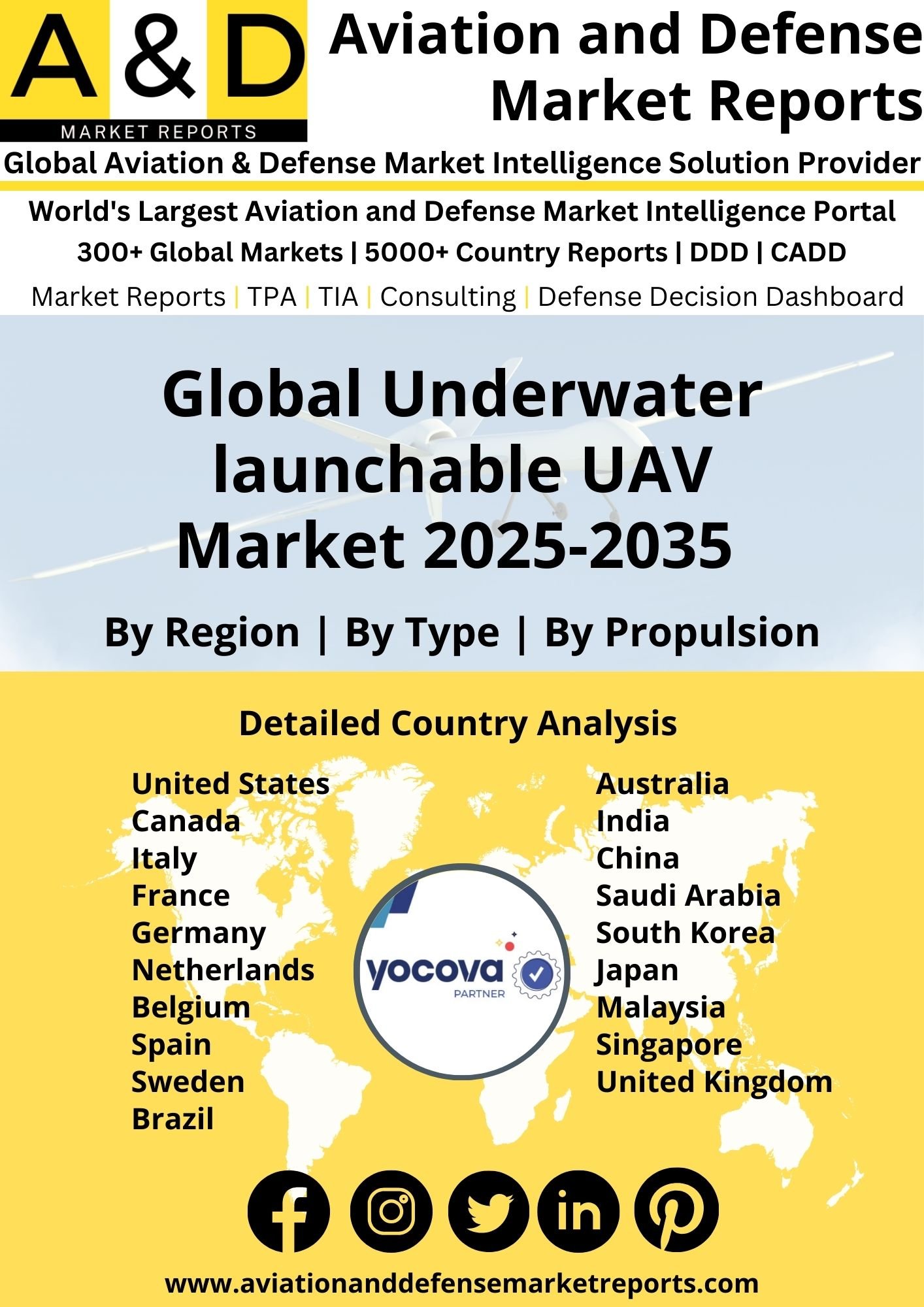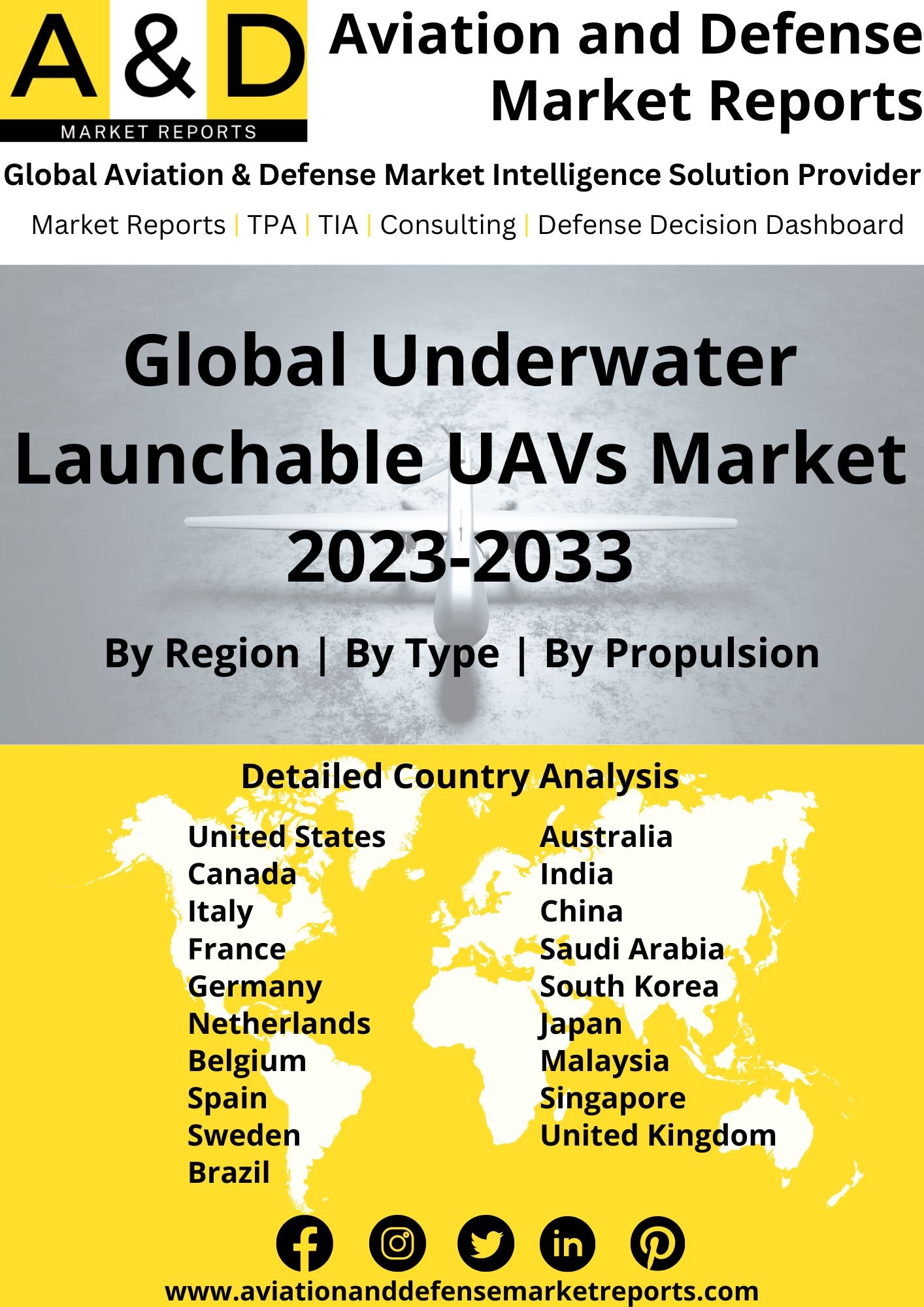Description
Underwater Launchable UAVS Market
Underwater Launchable Unmanned Aerial Vehicles refer to drones that are designed to be launched from underwater platforms, such as submarines or underwater stations, to perform various missions in the air. These UUVs are equipped with capabilities to transition from underwater to airborne operations, providing enhanced versatility and expanding the range of missions they can accomplish. The usage of autonomous vehicles has increased visibly across all branches of the military. Drone ships have been developed by navies all across the world; last year, we reported on how the Defense Advanced Research Projects Agency (DARPA) was working on underwater drones. So, why do submarines require aerial drones?
Despite their tactical advantages, submersible platforms have a significant disadvantage: they cannot see beyond the range of their periscope. For years, researchers have attempted to improve the range of vision on submarines by using flying items such as kites and even airplanes. However, to do so, the submarine must surface, removing the aspect of stealth. Underwater launchable UAV market are designed to transition from their submerged state to flying in the air. They can be stored in a watertight container or tube on submarines or underwater stations. Launching mechanisms vary, but they generally involve the UAV being propelled from the submerged platform to the surface, where it can take off as an aerial drone. These UAVs provide naval forces with the ability to conduct aerial reconnaissance, surveillance, intelligence gathering, target identification, and communication relay from underwater platforms.
Major factors driving Underwater Launchable UAVS Market Growth
Navies are looking for cost-effective and potent submarine-launched unmanned aerial platforms that can perform ISR and attack roles. This is the primary driver of the Underwater launchable UAV market growth. Increasing defense budgets are also one of the other drivers as it will encourage increased R&D and procurement activity.
Trends Influencing the Underwater Launchable UAVS Market Size
Launching Underwater launchable UAV market size from underwater platforms enhances their reach, versatility, and potential applications. Underwater launchable UAV market forecast is equipped with advanced autonomy features, allowing them to operate independently for extended periods. AI-driven algorithms enable intelligent decision-making, autonomous navigation, and adaptive behavior in dynamic underwater and aerial environments. The ongoing development of materials, sensors, propulsion systems, and energy sources contributes to the evolving capabilities of UAVs launched from underwater platforms.
Underwater Launchable UAVS Market Forecast & Dynamics
Underwater launchable UAV market analysis is enabling naval forces to conduct covert intelligence gathering, reconnaissance, surveillance, and special operations. Their ability to transition from underwater to aerial environments enhances mission flexibility and adaptability.
The emergence of underwater launchable UAV market report signifies a paradigm shift in naval and maritime operations. Their ability to bridge underwater and aerial domains with advanced autonomy, multi-mission capabilities, and seamless transitions opens new horizons for naval forces, enabling them to excel in reconnaissance, surveillance, covert missions, and collaboration across various operational scenarios.
Underwater Launchable UAVS Market Analysis for Recent Developments
Spear UAV has announced the launching of its Ninox 103 UW Sub-to-Air encapsulated autonomous quadcopter, which it says is the first loitering drone that can be launched from a submarine or other submerged platforms enabling immediate beyond-line-of-sight situational awareness. Submarines have a significant strategic and tactical advantage due to their ability to submerge. However, they have suffered from the disadvantage of not being able to see what’s happening on above the waves beyond the horizon of a periscope since their origin. The Ninox 103 has a range of 10 km (6 miles) and an endurance of 45 minutes while airborne. The drone has a payload of 1 kilogram (2.2 lb), minimal acoustic, thermal, and optical signatures, and Electro-Optical/Infra-Red (EO/IR) sensors for reconnaissance and autonomous target acquisition via its open-architecture artificial intelligence system. Encrypted communications, third-party data integration, and cross-domain connection are used to communicate with the submarine, other platforms, or special forces units ashore.
China Unveils New Underwater Kamikaze Drone Capable of defeating Taiwan’s Defenses. A Chinese kamikaze drone in development can be launched underwater, indicating a clear potential use in a Taiwan operation and an amphibious landing. A video shows a Chinese university’s Switchblade-like drone taking off from beneath the water’s surface, its wings folding out. A small tactical infantry support system, such as a loitering munition, combined with other major capital platforms such as the Type 075 amphibious Landing Helicopter Dock (LHD), Type 05 amphibious tank, and Z-10 attack helicopters, would be invaluable in breaching the defending Taiwanese’s heavy beach and inland fortifications.
The development and deployment of Global Underwater Launchable Unmanned Aerial Vehicles (UAVs) have reached new heights, revolutionizing maritime operations and surveillance. These advanced underwater UAVs are equipped with cutting-edge technology, enabling them to seamlessly transition from underwater to aerial operations. Designed for versatility, these UAVs can be launched from submarines, surface vessels, or underwater stations, providing a global reach for surveillance, reconnaissance, and data collection. Their ability to navigate both underwater and in the air makes them invaluable for monitoring vast oceanic expanses, ensuring enhanced maritime security, and facilitating rapid response to emerging threats.
Equipped with advanced sensors and communication systems, these UAVs can gather real-time data on underwater conditions, marine life, and potential security risks. The integration of artificial intelligence allows for autonomous decision-making, optimizing mission efficiency and adaptability in dynamic environments. As nations and organizations recognize the strategic importance of underwater capabilities, the deployment of Global Underwater Launchable UAV market trends in 2023 represents a significant leap forward in the field of maritime technology, fostering enhanced situational awareness and safeguarding marine ecosystems.
Key Companies
Hydrus Autonomous Underwater Vehicle





